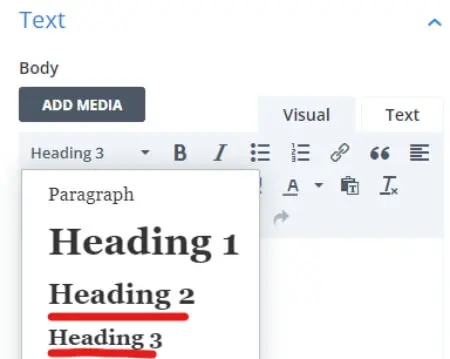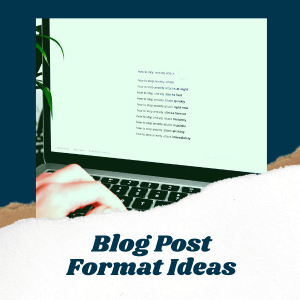What Does a Good Blog Post Look Like in 2025?
So, what does a good blog post look like?
It’s a common question that most blogging beginners struggle with to create a blog post that garners attention and drives traffic.
I’ve been there too, searching for the perfect blend of content and structure.
Fact: An effective blog post holds the power to increase your audience engagement substantially.
This guide will unveil secrets to crafting successful blogs, from dynamic headlines down to engaging conclusions.
Ready for game-changing tips? Let’s dive in on what makes a good blog post!
Key Takeouts
- A good blog post includes a magnetic headline, compelling lead, useful subheads, informative and engaging content, clear and concise writing, engaging visuals, and strategic keyword placement.
- The headline is crucial for attracting readers’ attention and should be around 60 characters long with power verbs and colorful adjectives.
- The introduction should hook the audience by addressing their desires or needs while injecting intriguing stories or promising value.
- Subheads enhance readability and SEO by capturing the reader’s attention while providing structure to the content. Keywords can be tactfully incorporated into subheads for better optimization.
What Makes a Good Blog Post?
This page have some affiliate links. In other words, if you buy from my links, I may get a commission. And some of the images were sources from Unsplash+.
Magnetic Headline
A magnetic headline is your golden ticket to attract more readers.
It’s that first impression. A brief glimpse of what you’re offering.
Think about it like a movie trailer, giving just enough information to make people want to see the whole thing!
Mastering this art can significantly boost your blog’s performance as headlines play an essential role in its success.
Power verbs and colorful adjectives are a great way to craft these attention-grabbing headlines.
Keep it around 60 characters long. This is optimal for most search engines and easy on the eyes of Twitter users who tend to share posts with 8-12 word titles most often.
And don’t be afraid of tweaking your headline even after publishing. Good optimization is key!
A Compelling Intro
As a novice blogger, crafting an engaging introduction is paramount to making your blog posts stand out. Think of it as the hook that reels in your audience.
A compelling lead sets the pace and tone for your entire post while addressing the desires or needs of your readers.
For instance, if you’re writing about indoor gardening tips, a strong lead could be something like “I transformed my living room into a lush oasis with these simple indoor gardening techniques.”.
Now let’s make this personal!
Create leads that magnetically draw readers deeper into your content by injecting intriguing stories or promising value from reading further.
Make sure they are concise but impactful. Giving them just enough to spark curiosity without spilling all the beans at once.
Power and relevance should ooze from every word of your lead because, after all, its job is to keep audiences glued down till they’ve soaked up every bit of insight you have to offer in that blog post.
A Good Blog Post Needs Subheads
In the world of blogging, subheads are your secret weapon.
They’re not just about splitting text into bite-sized chunks to enhance readability, they’re also a tool for SEO and organization.
With effective subheadings, you can capture the reader’s attention and clearly communicate what’s coming next in your blog post.
Think of them as mini headlines nestled within your content.
And they need to be engaging, informative, and useful too.
Including keywords tactfully into these subheads can boost your SEO game while simultaneously enhancing the overall user experience.
Don’t underestimate their power. Proper use of subheadings could be the difference between a good blog post and an extraordinary one.
Informative Content Wins
Writing informative and engaging content is one of the key elements of a good blog post.
When creating your blog post, you want to provide valuable information to your readers in a way that keeps them interested and wanting more.
By doing thorough research and gathering relevant facts, you can ensure that your content is accurate and credible.
Remember, your blog post should be tailored to your target audience’s needs and interests.
By understanding their preferences, challenges, or questions they may have about the topic, you can create content that resonates with them and provides practical solutions or insights.
To keep readers engaged throughout the article, use storytelling techniques or real-life examples to make the content relatable and digestible.
Break up long paragraphs into shorter ones for easier reading, and use bullet points or numbered lists to organize information effectively.
Clear and Concise Writing
When it comes to writing a good blog post, clear and concise writing is essential.
You want to make sure that your ideas are communicated effectively and efficiently, without any confusion or unnecessary fluff.
By using simple language and avoiding jargon, you can ensure that your message reaches your audience in a way that is easy to understand.
Also, breaking down complex ideas into smaller, digestible chunks helps readers stay engaged and focused throughout the entire post.
So remember, keep it clear and concise to truly connect with your readers. And no fluff.
Engaging Visuals
Here’s an interesting note.
Visual marketing is rated highly by marketers, with 71% considering it Very Important or Important to their strategy, while 19% believe their strategy is nothing without visual content. (Vengage)
One of the key elements of a good blog post is incorporating engaging visuals.
Adding images, videos, GIFs, and infographics can significantly enhance the overall reader experience.
Visual content not only grabs attention but also helps to break up blocks of text and make the post more visually appealing.
Studies have shown that blog posts with relevant images receive higher engagement from readers.
It is the reason why almost half of all marketers prefer to use visual content when creating blogs and websites. (Vengage)
These visuals help to illustrate points, provide examples, or showcase data in a more digestible way.
Including screenshots can be particularly effective in providing step-by-step instructions or demonstrating specific concepts.
Incorporating interesting visuals not only makes your blog post more visually appealing but also increases its shareability on social media platforms like Pinterest and Instagram.
Remember to choose high-quality images that are relevant to your topic and align with your brand’s aesthetic.
Strategic Keyword Placement
When you strategically place keywords throughout your content, it helps improve your search engine optimization (SEO) and makes it easier for readers to find your blog post.
By incorporating keywords naturally into your writing, you can optimize your content without sacrificing its quality or readability.
Remember these important tips for strategic keyword placement:
- In the headline: Including your target keyword in the headline is essential for SEO. It helps search engines understand what your blog post is about and improves its chances of ranking higher in search results.
- In the introduction: Incorporating your keyword in the opening paragraph grabs readers’ attention and sets the tone for the rest of the blog post. Avoid overstuffing with keywords; instead, focus on making it sound natural and engaging.
- In subheadings: Using relevant keywords in subheadings not only breaks up the content but also provides structure and helps both readers and search engines navigate through your blog post.
- Throughout the body: Sprinkle your target keywords (and secondary ones) naturally throughout the body of your blog post. This ensures that search engines recognize the relevance of your content while maintaining its readability.
- In anchor text: When linking to other articles or resources within your blog post, use anchor text that includes relevant keywords whenever possible. This not only improves SEO but also provides additional context for readers.
- In meta tags: Don’t forget to optimize meta title tags and meta descriptions by including targeted keywords in them too! These elements appear in search engine results pages (SERPs) and can greatly impact click-through rates.
- In alt tags for images: Adding descriptive alt tags to images in your blog post provides an opportunity to include relevant keywords while improving accessibility for visually impaired users. (Also label your image file names with your keywords. For example, what-is-a-good-blog-post.jpg)
- In blog post URL: Add your main keyword into your blog post URL. That is, yoururl.com/main-keyword
How to Write a Good Blog Post? Tips
To write a good blog post.
You have to know your audience, research relevant information, choose an interesting topic, use a conversational tone, incorporate SEO best practices, regularly update content and accept that perfection isn’t necessary.
With that said, let’s look at what makes a good blog in more detail.
Know Your Audience
To write a good blog post, it’s vital to understand your audience.
This means knowing who they are, what their interests and needs are, and how you can provide value to them.
By understanding your audience, you can tailor your content to resonate with them and address their specific pain points.
Conducting market research, analyzing demographics, or even engaging directly with your readers through comments or surveys can help you gain insights into their preferences.
Always keep in mind that writing for the right audience is key to creating a successful blog post. As it helps to grab attention and keeps readers coming back for more.
Research
Research is a crucial step in writing a good blog post.
It helps you gather the necessary information to provide valuable content to your readers. Here are some tips for conducting research effectively:
- Start by identifying your target audience and their interests. This will help you focus on gathering information that is relevant and useful to them.
- Use reliable sources such as reputable websites, scholarly articles, books, and expert opinions to gather information. Avoid relying solely on personal opinions or unverified sources.
- Take notes while conducting your research to organize the information effectively. Highlight key points, statistics, quotes, or other details that can support your writing.
- Look for different perspectives and arguments related to your topic. This will help you present a well-rounded view and engage readers with diverse opinions.
- Use data-driven research whenever possible to add credibility to your blog post. Include statistics, surveys, case studies, or any other relevant data that supports your claims.
- Keep track of your sources using proper citations or references. This not only gives credit to the original authors but also helps build trust with your readers.
- Stay updated with the latest trends and news related to your topic through social media platforms, industry forums, newsletters, or other reliable sources.
- Don’t be afraid to reach out to experts or professionals in the field for interviews or guest contributions. Their insights can add depth and credibility to your blog post.
Be Relevant and Interesting
As a blogging beginner, one of the most crucial steps in writing a good blog post is choosing a relevant and interesting topic.
Your topic should be something that aligns with your niche and resonates with your target audience.
Consider their wants, needs, and desires to ensure you’re providing valuable content. And, it’s helpful to stay up-to-date with current trends and popular topics within your industry.
By selecting an intriguing subject matter, you’ll capture the attention of readers right from the start.
Remember that there are numerous resources available online for generating blog post ideas, such as lists of unique blog ideas or trending topics for 2025.
Use a Conversational Tone
Writing a blog post with a conversational tone is the key to connecting with your readers.
It’s all about creating a friendly and relatable experience for them. Imagine you’re chatting with a friend – that’s the kind of vibe you want to bring to your writing.
When you use a conversational tone, it feels like you’re having a casual conversation rather than delivering information in a formal manner.
This helps build trust and makes your readers feel more comfortable engaging with your content.
As well, incorporating storytelling elements can make your blog post even more compelling.
Share personal anecdotes or experiences that relate to the topic at hand. This adds an authentic touch and keeps readers interested.
SEO Best Practices
We’ve touched on the keyword strategic placement earlier, now let’s look at incorporating the SEO best blogging practices.
This is crucial for improving the visibility and ranking of your blog posts on search engines.
Here are some tips to help you incorporate SEO effectively:
- Choose relevant keywords: Conduct keyword research to identify the most relevant and frequently searched terms related to your topic. Incorporate these keywords naturally throughout your blog post.
- Optimize your title: Craft a compelling headline that includes your target keyword. Keep it concise, attention-grabbing, and click-worthy.
- Write quality content: Create informative, engaging, and valuable content that fulfills the needs of your target audience. Focus on providing solutions, answering questions, or offering unique insights.
- Use headings and subheadings: Organize your content using appropriate headings and subheadings. This helps both readers and search engines understand the structure of your post while improving readability.
- Enhance readability: Break up long paragraphs into shorter ones for easier reading. Use bullet points or numbered lists when appropriate to make information more scannable.
- Optimize images: Compress images without compromising quality to reduce page loading time. Add alt text with descriptive keywords to improve search engine visibility.
- Build internal links: Link relevant keywords within your blog post to other related articles on your website to improve navigation and encourage readers to explore further.
- Make it mobile-friendly: Ensure that your blog post is responsive and displays correctly on different devices such as smartphones and tablets, as mobile optimization is critical for SEO rankings.
- Track metrics and adjust accordingly: Monitor important SEO metrics such as organic traffic, bounce rate, and time on page using tools like Google Analytics, Google Search Console or SERanking. Use this data to refine and optimize future blog posts.
By the way, here’s a blog post SEO checklist you can use before launch.
Keep Your Blog Fresh
Regular content updates are essential for a good blog post.
By consistently providing fresh and relevant information, you keep your readers engaged and coming back for more.
When your blog offers new insights, tips, or industry news on a regular basis, it shows that you are dedicated to delivering valuable content.
Also, updating your blog frequently improves its visibility in search engine rankings as search engines prioritize websites with regularly updated content.
Remember that blogging is an ongoing process, and creating quality content takes time and effort.
Don’t be discouraged if you don’t see immediate results. Instead, focus on consistently providing valuable information to your target audience.
A Good Blog Post Doesn’t Have to Be Perfect
I understand that as a beginner blogger, you may strive for perfection in every blog post you write. I’ve been there.
The more I tried to make it perfect, the longer I delayed the release of the blog post. It was a time suck.
However, it’s important to accept that no matter how hard you try, your blog post will never be perfect.
Instead of aiming for unattainable perfection, focus on delivering valuable content to your readers.
Remember that authenticity and connection are more important than flawless writing or impeccable formatting.
Embrace the fact that imperfections are what make us human and relatable.
By accepting this reality, you can free yourself from the pressure of perfection and instead concentrate on producing high-quality and engaging blog posts that resonate with your audience.
(You can always update the blog when the numbers are in.)
And one more thing. We have to accept that not every blog post will hit the target. There will be hits and misses.
Structure and Formatting of a Good Blog Post
This is what makes a good blog.
It should have short paragraphs and bullet points for easy readability.
Relevant images or videos should be included to enhance the content, while headings and subheadings help organize information.
Using bold or italicized text can emphasize key points, and proofreading and editing ensure clarity and grammar accuracy.
Use Short Paragraphs and Bullet Points
Short paragraphs and bullet points are crucial elements of a well-structured and visually appealing blog post.
They help to break up the text, making it easier for readers to scan and digest the information.
Here’s why you should incorporate short paragraphs and bullet points into your blog posts:
- Improved readability: Large blocks of text can be off-putting and difficult to read. By using shorter paragraphs, you make it easier for readers to follow along and understand your content.
- Easy skimming: Many online readers tend to skim articles rather than reading them word for word. Bullet points provide a clear structure that allows readers to quickly identify key points or highlights of your post.
- Emphasizing important information: By using bullet points, you can draw attention to vital facts or key takeaways from your blog post. This helps readers grasp the main ideas even if they’re only scanning through the content.
- Visual appeal: Short paragraphs and bullet points create visual breaks in your blog post, which make it more visually appealing and less overwhelming to read. This encourages readers to stay engaged with your content.
- SEO benefits: Search engines like Google also appreciate well-formatted content because it improves user experience. By using short paragraphs and bullet points, you enhance the readability of your blog post, increasing its chances of ranking higher in search engine results.
- Increased accessibility: Shorter paragraphs are especially beneficial for mobile users who may be viewing your blog on smaller screens. Breaking up large chunks of text into bite-sized sections makes it easier for mobile users to consume your content on the go.
Add Images or Videos
This was mentioned earlier. But it’s worth repeating.
Including relevant images or videos in your blog post is crucial for capturing and maintaining your readers’ attention.
Plus, it helps to break up the wall of text. Which makes it an easier reading experience.
And.
People are naturally drawn to visual content, making it an effective way to convey your message and break up text-heavy articles.
A Study by AIContentify has shown that blog posts with images receive significantly more views and engagement than those without.
Adding visuals not only makes your blog post visually appealing but also helps improve its search engine optimization (SEO).
By using alt tags and optimizing image file names, you can enhance the visibility of your blog post in search engine results.
And including relevant images or videos can reinforce the information you’re trying to convey and make it easier for readers to understand complex concepts.
When selecting images or videos for your blog post, choose ones that are directly related to the topic at hand.
This will not only make your content more visually stimulating but also add credibility to what you’re writing about.
Remember, high-quality visuals help create a positive user experience by keeping readers engaged throughout their reading journey.
Utilize Headings and Subheadings
Headings and subheadings are crucial for creating a well-structured and organized blog post.
They act as signposts within the text, guiding readers through different sections of your content.
Here’s why you should utilize headings and subheadings in your blog posts:
- Enhance readability: By breaking up your content with headings and subheadings, you make it easier for readers to scan through your article and find the information they’re looking for. This is especially important for online readers who tend to skim rather than read word-for-word.
- Create visual appeal: Headings and subheadings add white space to your blog post, making it more visually appealing and less daunting to read. They provide a clear structure that helps readers navigate your content effortlessly.
- Improve SEO: Search engines like Google rely on headings and subheadings to understand the structure of a blog post. By including relevant keywords in your headings, you can improve the visibility of your article in search engine results.
- Highlight key points: Use headings and subheadings to emphasize important information or main ideas within your blog post. This can help draw attention to key takeaways or arguments, making your content more engaging.
- Organize complex topics: If you’re writing about a complex subject, headings, and subheadings help break down the information into manageable chunks. This allows readers to easily follow along and grasp the main concepts you’re presenting.
- Encourage deeper reading: Well-crafted headings and subheadings entice readers by giving them a taste of what’s to come in each section of your blog post. Intriguing subheadings can keep readers engaged throughout the entire article.
- Facilitate content updates: When you need to update or revise specific sections of an older blog post, having clear headings makes it easier for you to locate those areas that need improvement or new information.
Bold or Italicized Text for Emphasis
Using bold or italicized text can greatly enhance the impact of your blog post.
When you want to draw attention to a particular word or phrase, using bold text helps it stand out and catch the reader’s eye.
For example, if you’re discussing the key elements of a good blog post, you might emphasize words like “magnetic headline” or “engaging visuals” to highlight their importance.
On the other hand, italicized text is great for providing emphasis in a more subtle way.
It can be used when quoting someone or highlighting specific names or dialogue within your content.
It also works well for providing a slightly weaker emphasis compared to bold text.
Proofread and Edit
When it comes to writing a good blog post, one of the most important steps is proofreading and editing for clarity and grammar.
This ensures that your message is clear and easily understood by your readers.
Proofreading involves checking for spelling mistakes, punctuation errors, and grammatical inconsistencies.
By taking the time to carefully review your work, you can correct any issues and improve the overall quality of your writing.
Remember that even experienced writers make mistakes, so don’t be too hard on yourself if you find some errors during this process.
Using proofreading tools can also help streamline the process and ensure efficiency in catching those minor mistakes.
Effective Blog Post Formats
Want to up your blog posting game? Here are some examples of effective blog post formats to keep in mind.
Listicles
Listicles are a popular and effective format for blog posts. They are essentially articles presented as lists, with each item containing a brief description or explanation.
This format is great for beginners because it’s easy to write and engages readers by breaking down complex topics into manageable points.
Listicles can cover various subjects, from “10 Best Tools for Blogging” to “5 Tips for Effective SEO.”
By using headings for each point, listicles can also be optimized for SEO purposes.
So if you’re looking to create engaging content that drives traffic and conveys information in an organized manner, consider incorporating listicles into your blogging strategy.
How-to Guides
When it comes to blogging, one of the most effective formats is the “How-to” guide.
These types of blog posts provide step-by-step instructions on how to accomplish a specific task or achieve a certain goal.
For an example of a “How-to” guide check out my post on How to Start a WordPress Blog on Bluehost.
For beginner bloggers, this format can be particularly valuable as it offers a clear and concise structure for organizing content.
How-to guides not only provide readers with actionable advice, but they also establish you as an authority in your niche.
By following a simple formula of introducing the topic, breaking it down into manageable steps, and offering practical tips or examples along the way, you can create highly engaging and informative blog posts that resonate with your audience.
Opinion Pieces
Opinion pieces are a popular type of blog post that allows you to share your thoughts and personal viewpoints on a particular topic.
These posts provide a platform for expressing your ideas, beliefs, and perspectives to engage with your readers.
Opinion pieces can be engaging and thought-provoking, as they delve into current events or controversial issues.
They allow you to establish yourself as an authority in your niche by offering unique insights and analysis.
By sharing your opinions with transparency and clarity, you can spark conversations among your audience while building trust and credibility in the process.
With 40 different types of engaging content available, opinion pieces are just one way to express yourself on your blog.
Ask the Experts
Conducting interviews are a fantastic way to add depth and value to your blog content.
By featuring the insights and perspectives of industry experts, you can provide readers with unique and valuable information.
Interview posts allow you to showcase the thoughts and experiences of others in your niche, providing your audience with fresh perspectives they may not have considered before.
When conducting an interview for your blog post, it’s important to have a clear outline or set of questions beforehand.
This helps keep the conversation focused and ensures that you cover all the key points you want to address.
Be sure to ask open-ended questions that encourage detailed responses from your interviewees.
Remember, interviews are not just about gathering information – they also serve as a means of building relationships within your industry.
By featuring authorities in your niche, you can establish connections that may lead to future collaborations or opportunities for mutual growth.
And gain insights from industry leaders.
Utilize these tips when crafting compelling interview-based blog posts:
- Prepare an outline or set of questions.
- Ask open-ended questions for detailed responses.
- Keep it relaxed
Case Studies
Case studies are an incredibly valuable tool for bloggers.
They showcase real-life examples and results, providing proof of how a product or service has helped other companies.
As a beginner blogger, incorporating case studies into your blog posts can help build trust with your readers and demonstrate the practical applications of what you’re discussing.
By following proven templates and utilizing effective formatting elements, such as headings and subheadings, bullet points, bold or italicized text for emphasis, and relevant images or videos, you can create engaging case study blog posts that inspire your audience.
Whether you’re writing for students, companies, marketing purposes, or more specific niches, there are numerous examples and sample PDFs available to help guide your writing process.
How to Do a Good Blog Post – FAQs
What are the elements of a good blog post?
A good blog post typically includes an attention-grabbing title, an engaging introduction, well-structured content with clear headings and subheadings, relevant images or visuals, supporting data or examples, a strong conclusion that summarizes key points, and a call-to-action to encourage reader engagement.
How long should a good blog post be?
The ideal length of a blog post can vary depending on the topic and target audience. However, it is generally recommended to aim for at least 1000 words to provide enough depth and value to readers. Longer posts (1500+ words) often perform well in terms of search engine optimization.
Should I include visual elements in my blog posts?
Yes, incorporating visual elements such as images, infographics, charts or videos can greatly enhance the overall appeal and readability of your blog post. Visuals help break up text-heavy content and make it more visually appealing to readers.
How important is SEO for a good blog post?
SEO (Search Engine Optimization) plays a crucial role in helping your blog posts rank higher in search engine results pages (SERPs). By optimizing your content with relevant keywords, meta descriptions, title tags, and internal/external links, you increase the chances of attracting organic traffic from search engines and reaching a wider audience.
What Makes a Good Blog Post – Sources
What Does a Good Blog Post Look Like? The Wrap Up
A good blog post is one that captivates readers from the very beginning with a magnetic headline and compelling lead.
It provides informative and engaging content through useful subheads, clear and concise writing, and engaging visuals.
Strategic keyword placement is important for SEO purposes, while regular content updates keep the blog fresh.
Structure and formatting play a key role in making the post visually attractive, incorporating short paragraphs, relevant images or videos, headings, and subheadings, as well as bold or italicized text for emphasis.
Finally, effective blog posts can take various formats such as listicles, how-to guides, opinion pieces, interviews, or case studies to cater to different reader preferences.
You Might Want to Check This Out Too
Disclosure: This post may contain affiliate links, which means I’ll receive a commission if you purchase through my links, at no extra cost to you. Please read full disclosure for more information.
Resources To Grow Your Business With
Pinteresting
Struggling to get traffic from Pinterest? Pinteresting Strategies 2025 by Carly Campbell reveals a manual pinning method that works—even with algorithm changes.
This course walks you through step-by-step strategies to pin effectively, increase engagement, and grow your blog without relying on expensive schedulers.
Carly has used this exact system to bring in 100,000+ page views in just months, and now she’s sharing it with you.
Stop guessing and start seeing real results today!
Bluehost
Bluehost is a great starting point for beginners or bloggers who want to switch to a reliable web hosting service. And it gives you the best bang for your buck - starting at $2.95 a month*.
With the entry-level hosting plan, you'll get a high up-time, reliable customer support, FREE domain name (first year) and 30 day money back guarantee.
You can sign up with Bluehost here.
WPX Hosting
It's a web-hosting service I love using. It specializes in WordPress hosting, and depending on what package you opt for, you can host 5 or more sites on one account. The best bit is - the quick turnaround in support is top notch.
For bloggers who have an established blog, this is a fantastic option.
You can learn more about this service here.
Aweber
Building an email list of a growing audience is essential for the longevity of any business. This autoresponder service is easy to use, and it is a great starting point for someone looking to kickstart their email campaign.
Hi, I’m Jason Ou (surname aka, Oh). I am a Solopreneur and Blogger. My mission is to help fellow entrepreneurs (like you) to profit from their passion online. Let’s connect on Facebook now.












